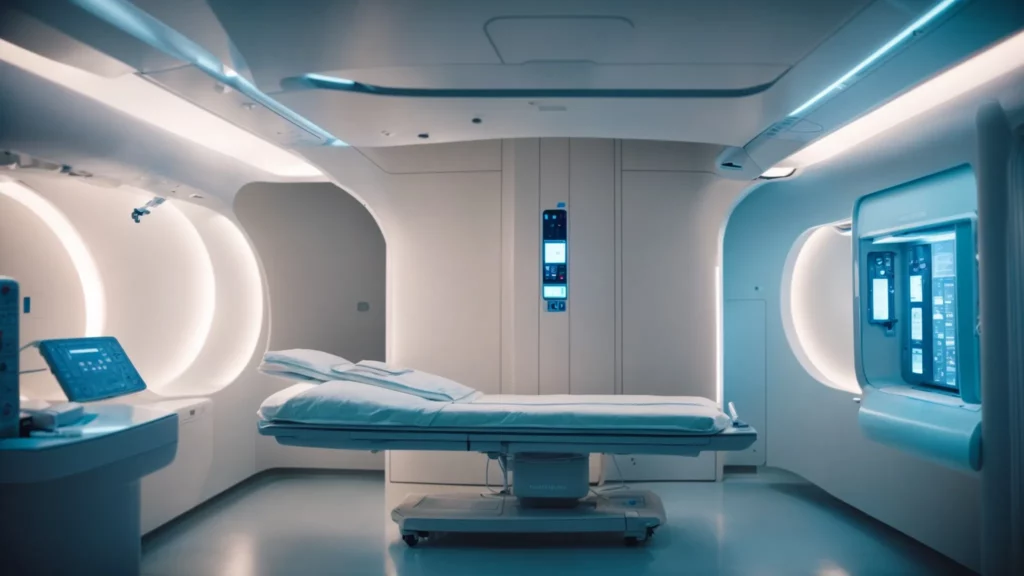The Future of Healing: How Regenerative Medicine is Transforming Patient Care
As medicine strides into the future, the boundaries of healing are being redefined by a transformative field known as regenerative medicine. This emerging practice has the potential to repair damaged tissues, regenerate lost organs, and ultimately change the trajectory of debilitating diseases. With advancements in stem cell therapy, tissue engineering, and gene editing, regenerative medicine is rapidly becoming an integral part of patient care strategies. Below, we explore how these advanced treatments are revolutionizing the medical landscape and what it could mean for future generations seeking cures for chronic illnesses.
The Impact of Stem Cell Therapy on Chronic Disease Treatment

Stem cell therapy is revolutionizing the treatment of chronic diseases by repairing damaged tissues and potentially offering long-term relief. From regenerating cardiac tissue after a heart attack to exploring solutions for type 1 diabetes, this cutting-edge approach provides hope for patients seeking alternatives to conventional treatments.
Beyond physical healing, stem cell therapy enhances overall well-being by reducing side effects and improving quality of life. Institutions like Regenexx Pittsburgh are leading advancements in regenerative medicine, particularly in orthopedic care, demonstrating the therapy’s growing impact on modern healthcare.
Exploring the Basics of Regenerative Medicine and Its Role in Modern Healthcare
Regenerative medicine aims to restore function and structure to damaged tissues and organs using stem cells, growth factors, and biomaterials. This approach differs from traditional treatments, focusing on addressing the root causes of disease. Stem cells are crucial for developing therapies for conditions like Parkinson’s disease, spinal cord injuries, and heart disease. Biomaterials are also being developed to support tissue repair and regeneration, interacting with the body’s natural healing processes.
This is essential for the advancement of regenerative therapies. Tissue engineering and regenerative techniques are also being explored to reduce organ transplant lists, as generating organs from a patient’s own cells could alleviate issues of organ shortage and rejection. This highlights the significant implications of regenerative medicine on healthcare.
Advances in Tissue Engineering: A New Era for Organ Transplantation
Tissue engineering is revolutionizing organ transplantation by using a patient’s own cells to create personalized grafts. This process begins with a biocompatible scaffold, which is then seeded with the patient’s cells, resulting in functional tissues that can integrate with the recipient’s body. While still in its early stages, breakthroughs in engineering skin, blood vessels, and bladders are paving the way for more complex organ constructs like kidneys and livers.
Despite the complexity of human organs, the relentless pursuit of innovation in tissue engineering promises a future where organ failure may not be a life sentence. This progress signals the beginning of a new chapter in transplantation medicine, bringing hope to millions worldwide.
The Role of CRISPR and Gene Editing in Future Healing Techniques

The discovery of CRISPR and other gene-editing tools has revolutionized precision medicine, allowing scientists to edit the human genome with unprecedented accuracy. These technologies have potential therapeutic applications, including correcting genetic mutations and preventing inherited diseases. Diseases caused by a single defective gene, such as cystic fibrosis or sickle cell anemia, can be eradicated before symptoms manifest.
CRISPR’s ability to manipulate genes is also being explored for enhancing the body’s immune response to various forms of cancer. The application of gene editing raises complex ethical and safety concerns, and stringent regulatory frameworks are being established to guide responsible gene therapies. As the science advances, ongoing dialogue between researchers, ethicists, and the public will be crucial to navigate the moral labyrinth of genetic modification.
Ethical Considerations and Regulatory Challenges in Regenerative Medicine
Regenerative medicine, a promising treatment for diseases, faces ethical dilemmas and regulatory hurdles. The source of stem cells, genetic modification, and societal implications are key topics of debate. Regulatory agencies worldwide are grappling with overseeing the rapidly evolving landscape of regenerative medicine, balancing patient safety with scientific innovation. Guidelines and protocols must evolve with technological advancements to ensure effective and ethical therapies.
Public trust is crucial for the advancement of regenerative medicine, as transparent communication about benefits, risks, and limitations is essential for an informed society. Involving the public in these discussions ensures that regenerative therapies align with societal values and expectations. Economic disparities also pose a regulatory challenge, as ensuring equitable access to cutting-edge therapies is crucial as they transition from research to clinical application.
Overall, regenerative medicine is charting a course towards a future where the healing of once incurable conditions may become a reality. With a thoughtful blend of scientific rigor and ethical oversight, the promise of regenerative therapies could materialize into a mainstream healthcare revolution, offering hope and healing to millions worldwide.
























